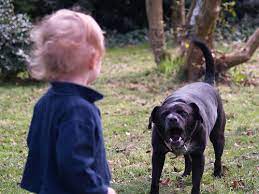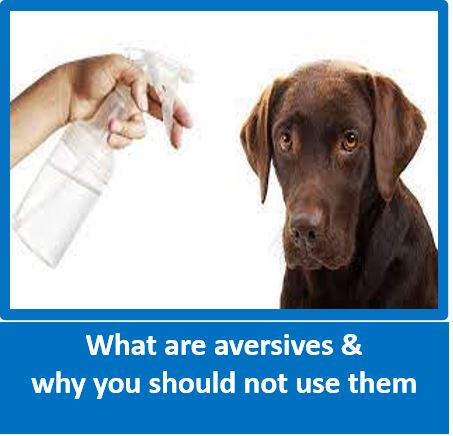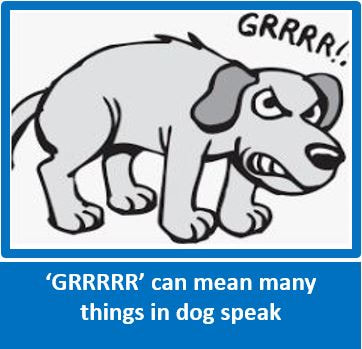
Please visit and LIKE our Facebook Page and share with family, friends and on your own Facebook page, and ask them to share further – it is only by working together and sharing knowledge and education that we can improve the lives of dogs and assist owners. We do not inundate you with posts – an average of 5 per week, and the odd Did You Know. Thank You!
Aggression Towards Children
www.vcahospitals.com - has some great articles by professionals, plus a list of VCA Hospitals throughout the US
www.vcahospitals.com - has some great articles by professionals, plus a list of VCA Hospitals throughout the US
from FOTD - if you have children you should make yourself aware of the more subtle signs of a dog's body language, especially where aggression is concerned. If even the slightest signs of aggression have been made by the dog towards the child - do not try to resolve this yourself - please get immediate professional help, it won't go away - www.animal-behaviour.org.za

What is the impact of canine aggression toward a child?Dogs are a wonderful part of many children’s lives.
However, fearful or aggressive dogs pose an enormous risk to a child’s safety. Children can behave erratically, move in unpredictable ways and make a host of loud and sudden noises. Children are often very interested in dogs and may want to touch them even when they are showing signs of fear or aggression. Children are at greater risk because they are at the same level as the dogs due to their height and because they are often interested in similar things (toys, food). Children may behave inappropriately towards dogs by pulling their tails, hair or ears. Most dog aggression towards children is fear based, though many dogs will also show aspects of food, possessive and territorial aggression as well. According to the CDC, 800,000 people seek medical attention for dog bites each year, half of which are children. Dog bites are most prevalent among children ages 5 to 9 and are more prevalent among boys. Children under 4 years old are most likely bitten in the head or neck due to their height. As children grow older, extremities become the more likely target. Children are most likely bitten by dogs they know; children under 6 are often bitten in circumstances involving food or possessions, while older children when approaching or invading a dog’s territory. This risk increases when living in multiple dog households. Family pets inflict two thirds of dog bites to children. In a retrospective study by Dr. Ilana Reisner, 66% of dogs had never previously bitten a child and 19% had not bitten a human. This shows that any dog may bite and biting may be a normal canine response to perceived threatening situations. Dogs and children do not know how to behave around each other instinctively. Steps must be taken to teach both dogs and children how to interact with each other safely.
How can I prevent my dog from being aggressive toward children?
The best way to address aggression toward children is to prevent it. During their socialization period (6 to 14 weeks of age), puppies are highly curious and impressionable. Making sure that puppies have numerous positive encounters with children of all ages during this period can help them cultivate a positive attitude towards children later on in life. Desensitizing them to being touched around the face and head and even tugged on gently will prepare them for the ways that they are touched by children. After 14 weeks of age, puppies become considerably more apprehensive of their surroundings and react more fearfully to threatening stimuli. It is important to avoid negative experiences during this time as much as possible. Do not use punishment techniques to make sure that dogs do not become fearful. Striking a dog can specifically cause a fear of being touched and may put children at a greater risk. Keep in mind that interactions with children outside of the home are not necessarily protective against fear and anxiety when later children occupy the home with the dog.
When choosing a dog for a family with children, take several factors into account. Consider breed and family history as well as the dog’s history of behavior around children. Try to spend time with the dog before adopting the dog into a house with children. Look for signs of fear, apprehension, or avoidance in the dog or in the children.
What can be done if my dog is already showing some aggression toward children?
Keeping children safe throughout this process is the primary concern. Once a dog has shown any signs of fear or aggression around children, you cannot assume that he/she will be safe to leave with children. Even if the dog has had several positive encounters with children, an adult should closely monitor all interactions. Sometimes an individual dog will never be safe around children.
Desensitization
Desensitization should take place in a slow, step-wise fashion. The child’s safety must be preserved during this process. The goal is to expose the dog to the child in a comfortable setting and at the distance where the dog is showing no signs of fear. Watch for subtle signs of canine fear or stress: yawning, lip licking, trembling, crouching, ears down, tail tucked. Signs of aggression and potential for escalation to a bite include barking, hair standing on end, snarling, growling, or snapping. Give the dog basic commands (e.g., sit, down, shake) and reward these tasks with favored treats. Over several successive sessions, the dog might be able to move closer to the child. If the dog becomes agitated, fearful, tense, disobedient, or refuses treats, then back up to a distance where the dog is more comfortable. Once the dog is accustomed to the presence of the child/children, the children can practice giving the dog verbal commands as well. This process can be greatly facilitated by teaching relax and settle commands to help the dog remain calm. A gentle leader head halter can also be an invaluable tool during this process.
Classical conditioning
Classical conditioning is another excellent tool for helping dogs become more comfortable around children. The goal is to give the dog’s favorite treats whenever children come near. In this way, the dog will learn to associate children with getting tasty treats. When the dog is well acclimated, children can offer treats to the dogs whenever they approach. Remember to keep the child’s safety in mind. Start by exposing the dog to a child that is being carried by an adult. Only allow the child to interact directly with the dog once the dog is showing no signs of fear or aggression and is looking excited about the encounter.
How can children be taught to safely interact with dogs?Children should be taught proper conduct around dogs starting as early as 18 months of age. Children should be positively rewarded for good interaction and immediately stopped if they are acting inappropriately. All interactions between children and unfamiliar, fearful or aggressive dogs should be monitored.
What should children be taught NOT to do?
What should children do around unfamiliar dogs?
What should children do around familiar dogs?
What should children do when confronted by an aggressive dog?
However, fearful or aggressive dogs pose an enormous risk to a child’s safety. Children can behave erratically, move in unpredictable ways and make a host of loud and sudden noises. Children are often very interested in dogs and may want to touch them even when they are showing signs of fear or aggression. Children are at greater risk because they are at the same level as the dogs due to their height and because they are often interested in similar things (toys, food). Children may behave inappropriately towards dogs by pulling their tails, hair or ears. Most dog aggression towards children is fear based, though many dogs will also show aspects of food, possessive and territorial aggression as well. According to the CDC, 800,000 people seek medical attention for dog bites each year, half of which are children. Dog bites are most prevalent among children ages 5 to 9 and are more prevalent among boys. Children under 4 years old are most likely bitten in the head or neck due to their height. As children grow older, extremities become the more likely target. Children are most likely bitten by dogs they know; children under 6 are often bitten in circumstances involving food or possessions, while older children when approaching or invading a dog’s territory. This risk increases when living in multiple dog households. Family pets inflict two thirds of dog bites to children. In a retrospective study by Dr. Ilana Reisner, 66% of dogs had never previously bitten a child and 19% had not bitten a human. This shows that any dog may bite and biting may be a normal canine response to perceived threatening situations. Dogs and children do not know how to behave around each other instinctively. Steps must be taken to teach both dogs and children how to interact with each other safely.
How can I prevent my dog from being aggressive toward children?
The best way to address aggression toward children is to prevent it. During their socialization period (6 to 14 weeks of age), puppies are highly curious and impressionable. Making sure that puppies have numerous positive encounters with children of all ages during this period can help them cultivate a positive attitude towards children later on in life. Desensitizing them to being touched around the face and head and even tugged on gently will prepare them for the ways that they are touched by children. After 14 weeks of age, puppies become considerably more apprehensive of their surroundings and react more fearfully to threatening stimuli. It is important to avoid negative experiences during this time as much as possible. Do not use punishment techniques to make sure that dogs do not become fearful. Striking a dog can specifically cause a fear of being touched and may put children at a greater risk. Keep in mind that interactions with children outside of the home are not necessarily protective against fear and anxiety when later children occupy the home with the dog.
When choosing a dog for a family with children, take several factors into account. Consider breed and family history as well as the dog’s history of behavior around children. Try to spend time with the dog before adopting the dog into a house with children. Look for signs of fear, apprehension, or avoidance in the dog or in the children.
- Make sure to have your dog spayed or neutered.
- Avoid interacting with your dog in any manner that you would not want him/her to interact with a child (wrestling, rough-housing).
- If your dog shows any signs of aggression, seek professional help immediately before these habits become ingrained.
- How should dogs be introduced to children?
- Never leave young children and infants alone with any dog.
- Muzzle dogs when around children if they have shown any aggression in the past.
- An adult should closely supervise all introductions between children and dogs.
- Use of a head-halter and leash can be helpful for maintaining control of the dog and in preventing unruly, exuberant or aggressive behavior.
- Do not use punishment for bad behavior or disobedience as this can greatly increase a dog’s fear and make them more aggressive.
- If the dog finds the situation stressful or shows unwanted responses they should calmly and immediately be removed from the situation.
- Make sure you have good verbal control of your dog (sit, down, come, drop it).
- Have children give known commands to the dog if the encounter is going well. Ideally, these commands have been taught by positive reinforcement training which allows the dog to generalize and comply with commands given by a variety of adults and children.
- Keep aggressive dogs safely separated from children.
- See Children and Pets, Crate Training – Guide – How to Crate Train, Learn to Earn – Predictable Rewards, Teaching Calm – Settle and Relaxation Training, Training Products – Head Halter Training, and Muzzle Training.
What can be done if my dog is already showing some aggression toward children?
Keeping children safe throughout this process is the primary concern. Once a dog has shown any signs of fear or aggression around children, you cannot assume that he/she will be safe to leave with children. Even if the dog has had several positive encounters with children, an adult should closely monitor all interactions. Sometimes an individual dog will never be safe around children.
Desensitization
Desensitization should take place in a slow, step-wise fashion. The child’s safety must be preserved during this process. The goal is to expose the dog to the child in a comfortable setting and at the distance where the dog is showing no signs of fear. Watch for subtle signs of canine fear or stress: yawning, lip licking, trembling, crouching, ears down, tail tucked. Signs of aggression and potential for escalation to a bite include barking, hair standing on end, snarling, growling, or snapping. Give the dog basic commands (e.g., sit, down, shake) and reward these tasks with favored treats. Over several successive sessions, the dog might be able to move closer to the child. If the dog becomes agitated, fearful, tense, disobedient, or refuses treats, then back up to a distance where the dog is more comfortable. Once the dog is accustomed to the presence of the child/children, the children can practice giving the dog verbal commands as well. This process can be greatly facilitated by teaching relax and settle commands to help the dog remain calm. A gentle leader head halter can also be an invaluable tool during this process.
Classical conditioning
Classical conditioning is another excellent tool for helping dogs become more comfortable around children. The goal is to give the dog’s favorite treats whenever children come near. In this way, the dog will learn to associate children with getting tasty treats. When the dog is well acclimated, children can offer treats to the dogs whenever they approach. Remember to keep the child’s safety in mind. Start by exposing the dog to a child that is being carried by an adult. Only allow the child to interact directly with the dog once the dog is showing no signs of fear or aggression and is looking excited about the encounter.
How can children be taught to safely interact with dogs?Children should be taught proper conduct around dogs starting as early as 18 months of age. Children should be positively rewarded for good interaction and immediately stopped if they are acting inappropriately. All interactions between children and unfamiliar, fearful or aggressive dogs should be monitored.
What should children be taught NOT to do?
- Do not play with dogs that are jumping up or acting too unruly.
- Do not disturb a dog that is eating, sleeping or caring for puppies.
- Do not touch a dog you do not know without asking permission.
- Do not touch a dog you do not know when there are no adults nearby.
- Do not touch any dog that is showing signs of fear or aggression.
- Do not pursue a dog that is moving away (moves away, crouches, growls).
- No teasing, punishing or rough play with any dogs.
- Do not touch a dog you do not know on the head.
- Avoid waving hands near a dog’s head.
- Avoid yelling, squealing or startling a dog.
What should children do around unfamiliar dogs?
- Ask permission to touch unfamiliar dogs.
- Give the dog a chance to approach, see and sniff them before touching.
- Let the dog come to them instead of reaching for the dog.
- Pet the dog only on the back and sides.
- Speak to them in a calm voice.
- Back away if the dog looks nervous, moves away, freezes, snarls, growls or attempts to bite.
What should children do around familiar dogs?
- Give simple commands and praise the dog for compliance.
- Give treats (as permitted) when approaching the dog.
- Command the dog to settle and relax in order to keep them calm (these are good commands to teach any dogs who live with children or are highly energetic).
What should children do when confronted by an aggressive dog?
- If an aggressive dog approaches, stand very still and stay quiet “like a tree.”
- If knocked over, roll in a ball and lie still, “like a rock.”
- Immediately tell an adult about what happened.




